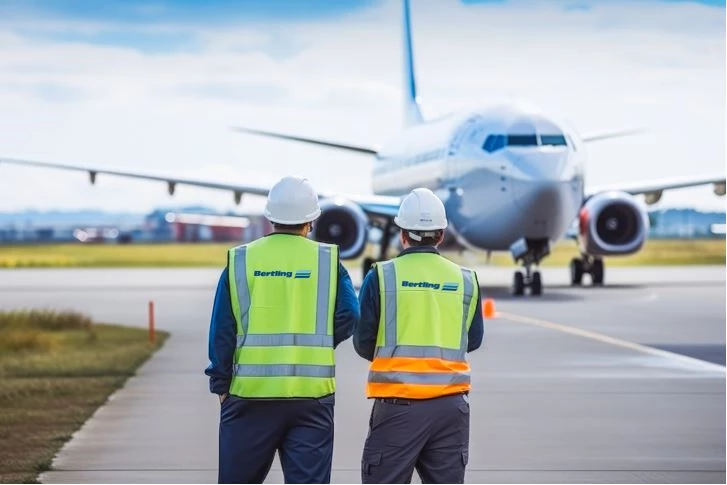The global air freight landscape in April is characterized by shifting trade routes, evolving demand patterns, and heightened geopolitical tensions. While traditional lanes like China–US experience declining volumes, regions such as Northeast Asia to Europe are witnessing increased demand. The imposition of significant tariffs and ongoing geopolitical crises are reshaping supply chain strategies, compelling businesses to adapt swiftly.
Rising Demand on Northeast Asia–Europe Routes Amid Global Disruptions
Shippers are increasingly favoring Northeast Asia–Europe air freight routes as alternatives to more disrupted corridors like China–US. This strategic rerouting reflects a broader shift in global trade behavior, with companies seeking more reliable and stable lanes to mitigate delays and risk. As a result, logistics providers are adjusting capacity and infrastructure to accommodate growing volumes on this corridor.

China–US Tariff Impact Fuels Rate Surges and Shifts in E-Commerce
The China–US air cargo market is facing a unique scenario: despite falling tonnage, rates have surged due to shippers rushing to move goods before new tariffs take effect. These cost spikes are putting pressure on logistics budgets and forcing rapid shifts in shipping strategies. E-commerce platforms, especially those relying on the U.S. "de minimis" exemption (e.g., Shein and Temu), are particularly impacted. Many are increasing prices and reevaluating distribution models as the cost of small parcel shipments rises sharply under the revised tariff and import rules.
Adapting to Change: Supply Chain Resilience in the Face of Global Risks
Businesses are overhauling supply chain strategies in response to rising global risks, including trade protectionism, geopolitical tensions, cyber threats, and environmental disruptions. These changes are fueling demand for more agile, diversified, and resilient supply chain networks. Companies are increasingly investing in digital technologies for better visibility and analytics while shifting sourcing away from China to spread operational risk. Key strategies include supplier diversification, reshaping contract terms for flexibility, and developing alternative logistics routes.
Key Trends
- Diversification of Trade Routes: Shippers are exploring alternative routes, such as Northeast Asia to Europe, to circumvent disruptions in traditional lanes.
- Increased Air Freight Utilization: Air cargo is being utilized more frequently as a backup for ocean freight delays, especially for high-value and time-sensitive goods.
- Evolving Demand from High-Value Industries: Sectors like artificial intelligence and semiconductors continue to drive demand for air freight services, despite broader economic uncertainties.
Main Reasons for Bottlenecks
- Regulatory Changes: Modifications to the U.S. "de minimis" rule have disrupted established e-commerce logistics models, leading to increased customs processing times and operational delays.
- Geopolitical Tensions: Ongoing trade disputes and tariff implementations are causing uncertainty in global supply chains, affecting air cargo flows.
- Infrastructure Strain: Increased demand for air freight services is placing additional pressure on airport facilities and logistics networks, leading to potential bottlenecks.
Impact on Freight Rates
- Surge in Rates: Air freight rates have surged due to increased demand and capacity constraints. Rates from China to the U.S. rose by 37% in March to $4.14 per kg .
- E-Commerce Adjustments: Platforms like Shein and Temu are raising prices for U.S. customers to offset increased operating costs stemming from new tariffs and changes in global trade rules .
- Volatility: Freight rates are expected to remain volatile as businesses adjust to new tariffs and regulatory changes, with potential fluctuations in both directions.
Outlook
- Volatile Freight Rates: Air freight rates are expected to remain volatile due to fluctuating demand, capacity constraints, and ongoing geopolitical tensions.
- Strategic Supply Chain Adjustments: Businesses are advised to reassess and diversify their supply chain strategies to mitigate risks associated with current trade policies and geopolitical instabilities.
- Emphasis on Resilience: Building resilient supply chains will be crucial, with companies focusing on flexibility and adaptability to navigate the evolving market landscape.
Customer advice
Considering the ever-changing market conditions and forces, please:
- Let's closely monitor the developments in the US trade policy and the impending world events to maneuver potential challenges effectively in the logistics industry.
- Think ahead and book well in advance. Try to plan for 6 months ++.
- Consider that the market can change significantly. Further disruptions can happen anytime.
- Identify contract options that enable flexibility and resilience for your business.
However, it is our job at Bertling to keep global supply moving and do all we can and apply our knowledge, network and expertise to protect our clients’ while taking the latest market developments into account. We are there to find the best solutions to ensure cargo flows.







